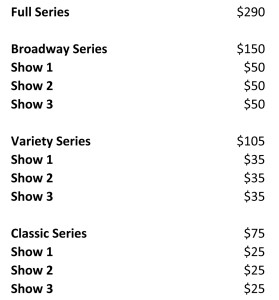Today I saw a post on The Creativity Post that had me thinking back to my piece yesterday on Seth Godin’s vision of what constituted an elite. In The Gorgeous Reality of Not Being Liked by Everyone, Jordan Bates addresses the individual who tries to please everyone, but much of what he says can apply to groups and organizations.
We all know we can’t please everyone, but still we either try to do so, or pretend we are doing so. The simple fact is, regardless of what you are writing on your grant applications, everyone in your community can’t be your market. You simply can’t be all things to all people. Just as Godin says trying to convert someone who doesn’t want to be is a near fruitless effort, trying to appeal to everyone can result in diluting your effectiveness across a broad swath, serving no one well.
Certainly, for arts organizations the motivation to serve all that you survey is driven by the funding system we have. No one source provides you with enough support so you have to position yourself broadly enough to garner support from 20 different sources.
As I read Bates’ advice to the individual, I see a lot of similarities for arts organizations.
2. Take Minor Social Risks – Start doing a few things that you normally wouldn’t do because of your fear of what others would think or say…
3. Live by Your Deeper Values – ... The more you seek to align your actions with what you feel in the heart of your being, the less you will invest in the opinions of the mud-flingers.
4. Focus on Actual Outcomes – ..
5. Love Your Good and Bad – Give yourself permission to not be the things you wish you could be. Embrace the fact that all of your qualities — both your boons and shortcomings — are essential to the equation that is you…
There is a fair bit of discussion these days about arts organizations needing to take more risks, focus on outcomes, embracing and acknowledging failure as well as success.
I wonder if it is possible to sit down with your funders and say, “Look, you have been funding us for a long time now so you know we are effective, but we want to narrow our focus on serving X. We anticipate much better outcomes than we are seeing currently and they will be deeper and more meaningful than the results we are currently reporting. Can we count on your continued, and perhaps increased support?”
I feel like there is a bit of a precedent for this sort of thing given the current focus on placemaking by the NEA and other influential funders. You can point to them and note that focused investment in one’s community is being highly valued by funders.
My initial impulse was to say, you have to avoid the perception of catering only to the wealthy. But as I thought about it, I wondered if part of the problem for some organizations has been a divided focus in trying to appeal to both the wealthy and the not so wealthy. Both groups end up feeling that the organization has neither of their interests at heart.
Arts organizations end up being Archie trying to alternately please both Betty and Veronica, except the results are not as hilarious in real life.
Now other than the Metropolitan Opera which has a waiting list miles long and people willing their seats to descendants, I don’t think any arts organization really has an interest in providing a premium product to a wealthy audience. It is the perception that you have to cater to one group based on their money and the other based on your mission that causes the uncomfortable division.
I know in my community the elitist active seekers that Godin describes cut across all social strata and income levels so there is some sense in his suggestion that the focus should be on serving them.
Of course, the question comes up about whether it is sustainable. There is a real possibility that people will have to be let go in order to serve this narrower focus. An organization I once worked for closed down their performing arts program of 20 years to focus on their core competency of over 50 years. This was motivated more by economic need rather than philosophic outlook, but in either case the organization has to examine its priorities. Better to make this decision of your own will than to have it forced upon you.
Even among the curious, everyone is not going to have the same interests and like everything you do. The current environment where most people are buying single tickets rather than subscriptions has changed the relationship and expectations the community has of arts organizations. It can be easier to concede and have them accept that they won’t like everything you present in your efforts to engage whomever you identify you want to serve.
It is likely they will accept that premise if there appears to be a corresponding attempt to discover what does interest and excite them and shift things in that direction. (Remembering the distinction between wants and needs)





Thanks for what you are doing to bring cultural change to the arts. It is so important to represent everyone.…